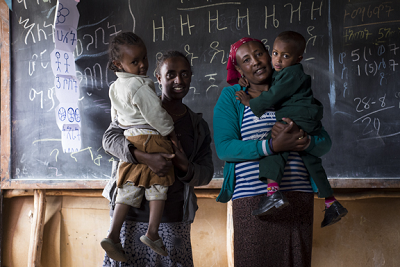Southern Nations, Nationalities, and Peoples Region (SNNPR)
SNNPR is one of the major regions in Ethiopia with over 56 ethnic groups that speak different languages. Thirty-one of these languages currently are used as instructional languages or are taught as a subject. By April 2017, regional officials had delivered on their promise to plan, budget for, and empower local education experts to develop reading curriculum for 17 new languages—replicating as best as possible the EDA education model.
The most recent EGRA of 2014 shows some improvement in reading scores, and also confirms serious gaps between girls and boys performance. Boys consistently outperform girls in reading in across skills tests. And while the number of zero scores dropped between 2010 and 2014, the vast majority of Grades 2 and 3 students tested did not achieve state benchmarks in reading. Based on these outcomes, the MOE has made the commitment to improving students’ reading performance, especially in the early grades.
The challenges to improving achievement in early grade reading are multi-faceted and require Sustained actions on several fronts. While the last twenty years have seen enormous investment in teacher development, teachers continue to ask for increased school-based support and better working environments. Until recently, however, even basic learning tools, such as textbooks and teachers guides, have not always been available or sufficient. Parents’ involvement in their children’s learning is often dictated by survival, not longer-term education goals, so parental engagement remains low. A weak classroom-home connection is one of the serious challenges in education, exacerbating the problem of literacy achievement. Literary rates in the country overall are especially low, as is access and participation in reading and
Ethiopia is poised to grow as a regional economic leader and has the characteristics to emerge as a pan-African model for growth in the years to come. The U.S. Government (USG) contributes importantly to Ethiopia's ambitious social and economic advancement goals. Through 20 years of education interventions, USAID has assisted Ethiopia in pioneering successful alternative basic education models, supported decentralization of the sector, and made initial efforts towards an improved environment for student acquisition of language and reading skills. To reach its vision for growth and social development, Ethiopia must maximize the contributions of its citizens and the resiliency of its communities. This includes youth, civil society actors, families, teachers, and education administrators. To contribute meaningfully to Ethiopia's vision for growth and social development, education sector donors must promote interventions that go beyond traditional access activities of the past and focus on the factors impeding classroom based learning. Ethiopia has already made the early and easier gains in access and quality. Future gains in student retention and learning require approaches that are research-based, flexible, cost-efficient, and which leverage partnerships and interdisciplinary interventions.
A high-performing education system in Ethiopia requires that several institutions work in sync, operating with greater efficiency. This includes schools, woreda and regional education bureaus, colleges of teacher education, universities, and the MOE. At the school level, Ethiopia needs teachers who are inspired, skilled and self-sufficient, and equipped with supplies, in addition to confident, expert principals who function as authentic leaders of learning communities. Such individuals will know how to help their school communities to better manage large classrooms and solve other challenges independently. Institutes of higher education must be homes to professionally current educational research and teacher preparation programs. They should have one foot in the schools, never losing sight of the challenges teachers face. Regional and woreda education bureaus also perform a critical oversight role. They each communicate local level needs to those who craft strategies and oversee budget allocations. These individuals must have a wide-range of administrative skills, alongside the competency and the knowledge to advocate for approaches that best support strong teaching and learning. While turnover of these individuals may be high at times, we know that in future positions they will continue to contribute to Ethiopia's civil service. The MOE aspires to facilitate and support the roles of these institutions. The administrators and technicians at the Ministry operate at a strategic level focusing on support and advocacy roles: empowering lower levels of government, guiding donors and local NGOs, negotiating with parliament and other ministries, and ensuring teachers and principals have the skills and knowledge to oversee implementation. Together, these actors can create a system that produces cohorts of well-educated students.
USAID/Ethiopia is responsible for one of the Agency's largest education programs and has demonstrated the potential for contributing meaningfully and significantly to USAID's global goals. READ II complements USAID Forward principles that seek greater focus, impact, and selectivity.
a. National Context
Ethiopia has undergone significant economic changes in the last 20 years and has recorded some of the highest growth rates in the world. Ethiopia's ranking in the Human Development Index (HDI), however, has not moved as appreciably during the past decade. Even though Ethiopia is one of the ten countries worldwide with the largest absolute HDI gains over the last several years, it still ranks 173rd out of 186 countries in the 2015 Human Development Report (HRD).
Ethiopia's rapidly growing population mostly engages in subsistence farming and more than one in twelve people are chronically food insecure. The country recently faced the worst drought in fifty years with almost 20 million people in need of emergency or sustained food assistance. The Government of Ethiopia (GOE) launched an ambitious plan to respond to the drought and approved a new five-year plan to accelerate growth. As a democratic developmental state, power and decision-making are intended to gradually devolve to the regional level, with more substantive federal support to regions that are “emerging.” This federal system ensures some measure of autonomy for all the country's diverse groups. But some Ethiopians perceive that the government is increasingly subduing their social values and identity. This has resulted in Ethiopia facing its largest protests and social conflict in a decade. The space for political expression and association is constrained during these times. In such a context, it is important that development activities are responsive to the needs of the people at the lowest level.
Access to education has greatly expanded in Ethiopia. Primary school net enrollment rates have almost tripled since monitoring began in 1994. Currently, 86% of primary age children are attending school. Secondary school enrollment has risen too, but remains relatively low, especially in rural areas and among the poorest (this is also true for the second cycle-grades 5-8-of primary school). By and large, many of the major determinants of inequity and exclusion are outside the classroom: poverty and food insecurity, child labor both commercially and at home, distance to schools (especially to secondary schools), gender disparities, and lack of continuous access to education for children from pastoralist families (HRD, 2015). Today, an estimated 60% of schools still have no access to water.
Despite of few improvement in the Ethiopian education system in recent years, resulting in improved access to education across Ethiopia, the poor quality of education, reflected in children’s poor reading performance, is still of concern. The recent USAID-supported Ethiopia National Learning Assessment (ENLA) and Early Grade Reading Assessments (EGRA) provide crucial evidence of these issues while focusing national attention on the challenges of improving children’s reading and writing skills. This evidence has identified the critical factors affecting children’s lack of reading skills, including comprehension. In addition to school- related factors such as teachers’ knowledge and skills to teach children how to read, use of teaching aids, having an established time for reading in schools, and access to reading materials in the schools, the community and home learning environment also plays a significant role in supporting the development of children’s reading skills.
According to EGRA 2010 and 14 assessments findings, family members helping children with their homework is the highest predictor of reading fluency, across both urban and rural settings and at all income levels.
These findings suggest that all children, irrespective of their backgrounds, can improve their reading and writing skills if the learning environment outside of school is supportive .Improving the quality of children’s reading experiences at home is especially important, and is a primary component of the READ II community outreach model.
b. Regional Context
Ethiopia is a large country composed of 9 regions with great geographical, cultural, and linguistic diversity. These characteristics directly impact the education system and the implementation of education interventions. Below, the education context from one of the more populous regions highlights this diversity and the implications on development interventions.
Southern Nations, Nationalities, and Peoples Region (SNNPR)
SNNPR is one of the major regions in Ethiopia with over 56 ethnic groups that speak different languages. Thirty-one of these languages currently are used as instructional languages or are taught as a subject. By April 2017, regional officials had delivered on their promise to plan, budget for, and empower local education experts to develop reading curriculum for 17 new languages—replicating as best as possible the USAID model.
c. Educational Context
Each year, the MOE publishes a comprehensive Education Statistics Annual Abstract. The Abstract for 2014/2015 was finalized in July 2016. The MOE's Education Management Information System (EMIS) collects the information for the annual abstract. EMIS data is intended to guide policy making and lead to corrections in national and regional strategies. This information relies on in-country data systems, originating from woredas and schools. Much more attention and work on this system is required to ameliorate incorrect data and limited capacity to analyze and use data, as well as to establish an overarching EMIS Policy.
The key policy areas for education development in Ethiopia are contained in the 1994 Education and Training Policy. Primary education lasts for eight years and is divided into two cycles: first cycle (grades 1-4) and second cycle (grades 5-8). This is followed by two years of general secondary education (grades 9-10) and second cycle secondary education (grades 11-12) in preparation for tertiary education.
To achieve the objectives of primary education, the policy emphasizes the professional development of teachers, the use of local languages at the first and second cycles of primary education, the supply and distribution of educational materials, strengthening of educational organization and management, and steady increases in education financing. To support the policy, five ESDPs have been developed thus far. One consistent and specific ESDP objective is to expand access to primary education with a focus on the promotion of education for girls. In 2000, the gross enrollment gender gap was approximately 20 percentage points in favor of boys, while by 2014 the gap had been reduced to seven percentage points.
Even though Ethiopia has made progress in reducing gender disparities, critical imbalances persist across the education sector—first grade intake, teacher trainees, and transition to higher primary grades all skew in favor of males. Only in the last five years has the gender gap started decreasing at the secondary school level. Female enrolment in tertiary education is significantly low; about 30%. Leadership and senior technical positions in the education sector favor males. They include low value attached to girls’ schooling, the need to keep girls home to help with farming, and child marriages for girls as young as age seven. According to 2016 EGRA found mixed gender disparities between both languages. In Hadiyissa language, boys performed significantly better than girls; while in Wolytigna language the girls significantly outperformed boys with small differences. However, girls performed better than boys in reading comprehension among third graders across both languages.
Ethiopian government allocates considerably an increased amount of budget for education sector to expand number of schools in every districts and villages. Due to this, number of students’ enrolment has gone to its maximum. For example, according to the annual abstract, grade 1-4 GER increased from 96% in 2010/11 to 101% in 2013/14. While, the net enrollment ratio rose to 92%. However, this not accompanied by expected percentage of completion rate since the average dropout rate is about 20% across the region with increased number of out of school children.
The most recent EGRA of 2014 shows some improvement in reading scores, and also confirms serious gaps between girls and boys performance. Boys consistently outperform girls in reading in across skills tests. And while the number of zero scores dropped between 2010 and 2014, the vast majority of Grades 2 and 3 students tested did not achieve state benchmarks in reading. Based on these outcomes, the MOE has made the commitment to improving students’ reading performance, especially in the early grades.
The challenges to improving achievement in early grade reading are multi-faceted and require Sustained actions on several fronts. While the last twenty years have seen enormous investment in teacher development, teachers continue to ask for increased school-based support and better working environments. Until recently, however, even basic learning tools, such as textbooks and teachers guide, have not always been available or sufficient. Parents’ involvement in their children’s learning is often dictated by survival, not longer-term education goals, so parental engagement remains low. A weak classroom-home connection is one of the serious challenges in education, exacerbating the problem of literacy achievement. Literary rates in the country overall are especially low, as is access and participation in reading and writing activities. Children often complete their schooling without reading a single book besides their textbook.
Problems addressed in teaching and learning in the region.
• This READ II project will take a significant step towards improving reading comprehension of early graders in SNNPR. Contributing problems for poor reading performance of children such as: poor teaching skill of teachers on teach reading, poor parental support at home, low engagement of parents in their children’s schooling, poor school leadership, poor reading culture of the community, and related problems will be addressed by this project.
• This project will work towards the identified problems as: supplying relevant reading materials establishing learning hubs, mobilizing communities to support reading, supporting parents and home-based reading, supporting school-based reading activities, supporting community-based reading activities,
Goal /overall objective:
Improving the reading proficiency of 15 million children by 2022, with a focus on Southern Nations Nationalities and peoples Region (SNNPR)
The overall objective is supported by three intermediate results:
IR 1. Improved classroom reading and writing instruction
IR 2. Strengthened community engagement in education activities
IR 3. Improved leadership, management, and delivery capacity at each administrative level
• Objective 1. To improve classroom reading and writing instruction in 7 weredas of Hadiya and welayta zone by the end of 2022.
• Objective 2. To enhance community engagement in education activities to support their children in the seven target weredas of hadiya and wolayta zone in a sustainable way by the end of the project period.
• Objective 3. To build capacity of school leaders, administrators and management for better delivery of education services.
Better Migration management (Safe Migration) and Inclusive Economic Empowerment (IEE) Projects
Migration is the movement of people across borders to reside permanently or temporarily in a country other than their country of birth or citizenship. The United Nations (UN) estimates that in 2013 some 232 million people were living outside their country of birth or citizenship for more than one year. This represents just over three per cent of the world’s population and would rank such migrants, if living within the same territory, as the world’s fifth largest country. While the number of international migrants has grown steadily, that three per cent proportion of world population has remained stable over the past 40 years. Migration today is motivated by a range of economic, political and social factors. Migrants may leave their country of origin because of conflict, widespread violations of human rights or other reasons threatening life or safety. Many are compelled by the absence of decent work to seek employment elsewhere. As globalization expands the global circulation of capital, goods, services and technology, migration responds to growing demand for skills and labour in destination countries. These factors along with ageing populations and declining workforces in high income countries increase international migration, including mobility of labour and skills.
Overall goal of the Better Migration management project: Facilitate orderly, safe, regular and responsible migration and mobility of people, including through the implementation of planned and well-managed migration policies.
The Overall Objective
‘’National authorities and institutions are able to facilitate safe, orderly and regular migration and effectively address and reduce trafficking in human beings and smuggling of migrants within and from the Horn of Africa region by applying a human rights-based approach.’’
EDA implementing Migration and governance of three principles and three objectives
Principles:
1. Adherence to international standards and the fulfillment of migrants rights.
2. Evidence and whole of government approaches to migration governance
3. Strong partnerships to support migration governance
Objectives:
1. To ensure socioeconomic well-being of migrants and societies
2. To ensure effective responses to the mobility dimensions of crisis
3. To ensure safe, orderly and dignified pathways of migrations
Human Trafficking
Rational of the project
As a grassroots development organization EDA in collaboration with its stakeholders addressing the issue of violence, coercion and abuse of power in its operation areas. In fact, all women, men and children throughout the country are comparably vulnerable to trafficking crimes. Besides, all trafficking victims are faced with several human rights abuses in their endeavor to cross the borders of neighboring and other destination countries, regardless of the travel mechanisms they use. According to U.S. (2012) TIP and IOM. (2012) report, Ethiopia is one of the countries of origin for internationally trafficking women subjected to conditions of forced labor and prostitution. Youthful women from all over the country are trafficked for domestic servitude to Gulf States as well as neighboring countries such as Djibouti, Kenya, Somaliland and Sudan to seek their dreams abroad.
The research found out that the women are pushed by poverty and allied factors and further hauled by the stories of attractive job opportunities and salary, pertaining to the false promises of the traffickers and individuals in the trafficking circle. Moreover, the findings signify that the women had experienced numerous human rights violations throughout the passage, in destination and prisons in Sudan. Thus, it is the belief of the EDA that the outcomes of the project will be helpful to all concerned stakeholders to take the necessary measures to see end the misery of many of Ethiopian women and children exposed and subjected to trafficking. The above-mentioned projects are implemented and ongoing in Wolayta and Hadya Zones for over 280,000 communities.

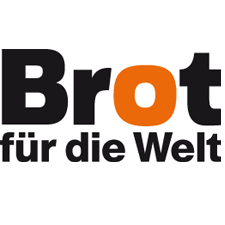




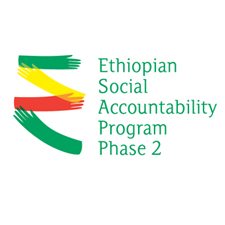





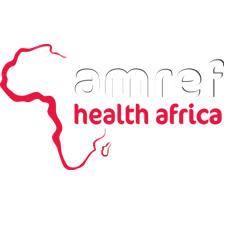
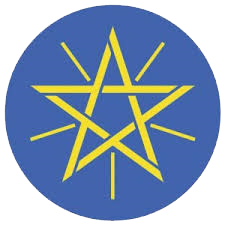
.png)
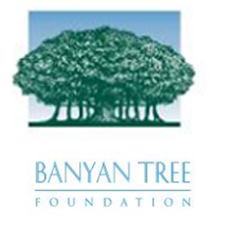


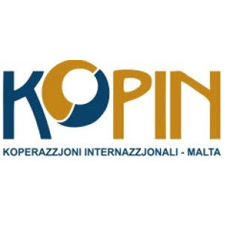
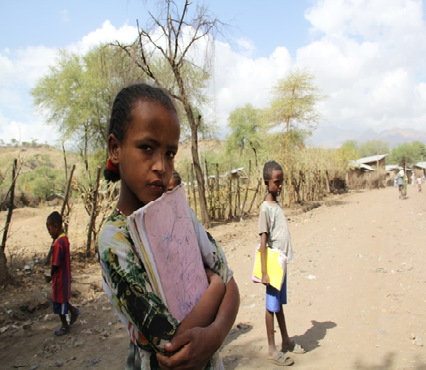
 Dr. Tessema Bekele is the founder, the heart and the soul of Emannuel Development Association. Dr. Bekele has been actively working toward his vision for the children of Ethiopia since 1996, but his desire to help started long before and is rooted in his personal history.
Dr. Tessema Bekele is the founder, the heart and the soul of Emannuel Development Association. Dr. Bekele has been actively working toward his vision for the children of Ethiopia since 1996, but his desire to help started long before and is rooted in his personal history.